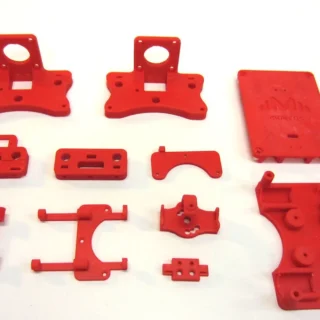Hang It Like a Pro: The Must-Have Wall Hanger for Every Gamer!
Your controllers deserve better than being tossed on your desk or sofa. Upgrade your setup and protect your gamepads with the Universal Gamepad Wall Hanger — a must-have for every gamer. Why a Wall Hanger Is a Game Changer This clever mount keeps your controllers safely off the floor and desk. No more accidental drops …
Hang It Like a Pro: The Must-Have Wall Hanger for Every Gamer!Read More
Level Up Your Gaming Setup: The Ultimate Wall Mount Holder for Your Controllers!
Every gamer knows the pain — tangled wires, misplaced controllers, and a cluttered gaming desk. Want to upgrade your setup without spending a fortune? Meet the Universal Wall Mount Holder for PS5, PS4, Xbox Series X/S & Switch Pro Controllers. The Problem with Cluttered Gamepads Controllers left on desks or couches easily fall and get …
Level Up Your Gaming Setup: The Ultimate Wall Mount Holder for Your Controllers!Read More
Keep Order Like Vader: The Ultimate Star Wars Desk Organizer!
If you’re a true Star Wars fan, your desk deserves a touch of the Empire. Meet the 3D Printed Darth Vader Pen Holder — a desk accessory that commands respect. Bring the Force to Your Desk Forget plain pen cups. This helmet-shaped holder instantly levels up your workspace, turning your desk into a mini Star …
Keep Order Like Vader: The Ultimate Star Wars Desk Organizer!Read More
Join the Dark Side: The Darth Vader Pen Holder That Organizes Like a Sith Lord!
Star Wars fans — are you ready to bring order to your galaxy of scattered pens and pencils? The 3D Printed Darth Vader Pen Holder is here to keep your desk as tidy as a Sith throne room. Why Star Wars Fans Love Unique Desk Accessories Why settle for boring when you can show off …
Join the Dark Side: The Darth Vader Pen Holder That Organizes Like a Sith Lord!Read More
Organize in Color: The Chameleon Desk Holder Everyone Will Love!
Organize in Color: The Chameleon Desk Holder Everyone Will Love! Why settle for a plain pen stand when you can have a bright, playful companion? The Chameleon Pen Pencil Holder is here to make your desk pop! Why Choose a Fun, Colorful Pen Stand A creative workspace deserves accessories that match your vibe. This colorful …
Organize in Color: The Chameleon Desk Holder Everyone Will Love!Read More
Brighten Up Your Desk: Meet the Colorful Chameleon Pen Holder!
Brighten Up Your Desk: Meet the Colorful Chameleon Pen Holder! Tired of dull, boring pen stands? It’s time to add a pop of personality to your workspace with the Chameleon Pen Pencil Holder — a fun, colorful organizer that keeps your stationery in check. Why Colorful Organizers Boost Creativity Studies show that bright colors can …
Brighten Up Your Desk: Meet the Colorful Chameleon Pen Holder!Read More
Tame the Chaos: The Venom Carnage Edition Pen Holder for True Fans!
Tame the Chaos: The Venom Carnage Edition Pen Holder for True Fans! Ready to add a dose of Marvel mischief to your study table or office desk? Meet your new sidekick — the Venom Pen Pencil Holder — Let There Be Carnage Edition. Bring Marvel Legends to Your Desk This isn’t just another pen holder. …
Tame the Chaos: The Venom Carnage Edition Pen Holder for True Fans!Read More
Unleash the Symbiote: The Venom Pen Holder is Here to Rule Your Desk!
Unleash the Symbiote: The Venom Pen Holder is Here to Rule Your Desk! Marvel fans, get ready to transform your boring desk into a thrilling battleground — the Venom Pen Pencil Holder — Let There Be Carnage Edition is your new desk companion! Why Superhero Fans Love This Desk Organizer Forget plain pencil stands. If …
Unleash the Symbiote: The Venom Pen Holder is Here to Rule Your Desk!Read More
Declutter in Style: The Multifunctional Desk Organizer You’ll Love!
Declutter in Style: The Multifunctional Desk Organizer You’ll Love! Do you spend too much time looking for your pens, sticky notes, or headphones? The Multifunctional Desk Organizer with Headphone Stand is the desk hero you’ve been waiting for. The Everyday Desk Mess Scattered stationery, tangled headset wires, lost earbuds — we’ve all been there. Clutter …
Declutter in Style: The Multifunctional Desk Organizer You’ll Love!Read More
Tidy Desk, Tidy Mind: Meet the Tabletop Organizer with Headphone Stand!
Tidy Desk, Tidy Mind: Meet the Tabletop Organizer with Headphone Stand! If your desk is cluttered with tangled headsets, scattered pens, and sticky notes everywhere, you’re not alone. But there’s an easy fix: the Tabletop Organizer with Headphone Stand. Why Desk Organization Matters A messy workspace kills productivity and wastes time. A neat, organized desk …
Tidy Desk, Tidy Mind: Meet the Tabletop Organizer with Headphone Stand!Read More


